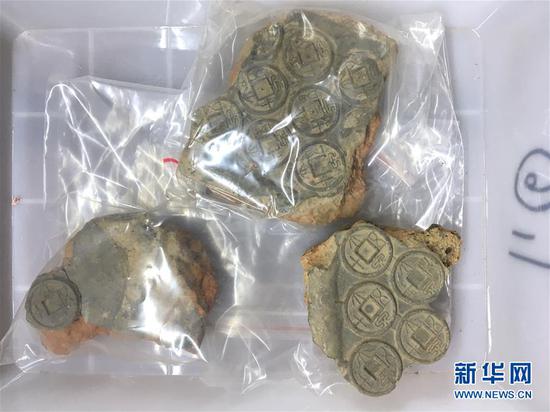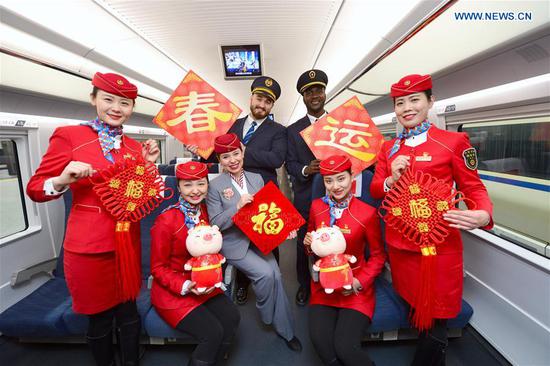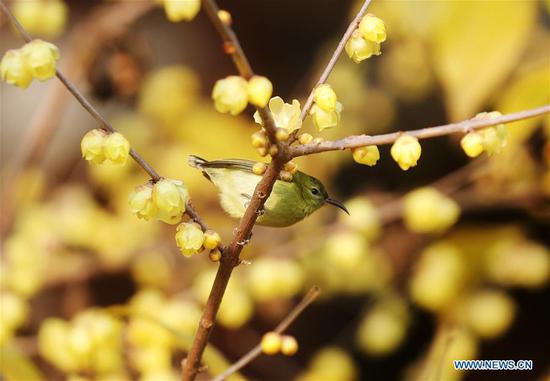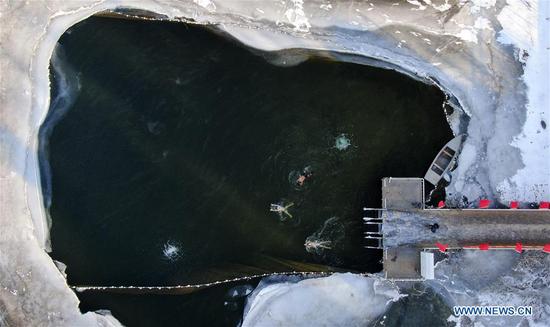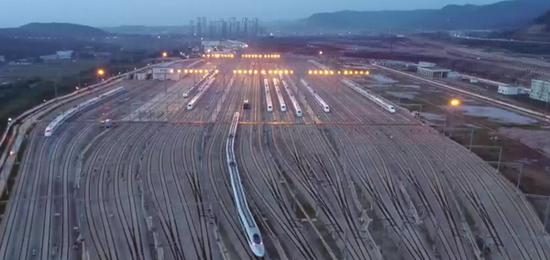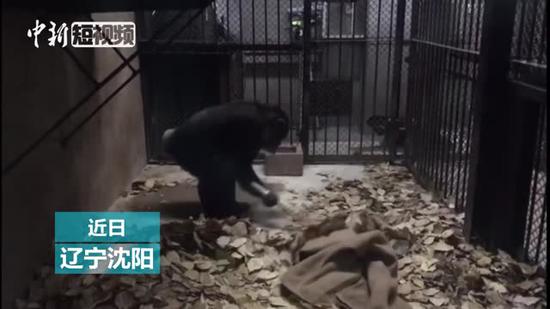
A passenger carrying his child on shoulder gets on a special train for migrant workers at the Beijing West Railway Station in Beijing, capital of China, Jan. 14, 2005. Returning to hometowns remains the most important part of the Chinese Spring Festival. Whether self-driving, or taking the trains or flights, homecomings and family gatherings are a priority for many Chinese. The annual travel rush around the festival, known as "chunyun," often puts the country's transportation system to the test. China's transport authorities are busy getting ready for the Spring Festival travel rush starting Jan. 21 this year, with 3 billion trips expected to be made. (Xinhua/Li Wen)
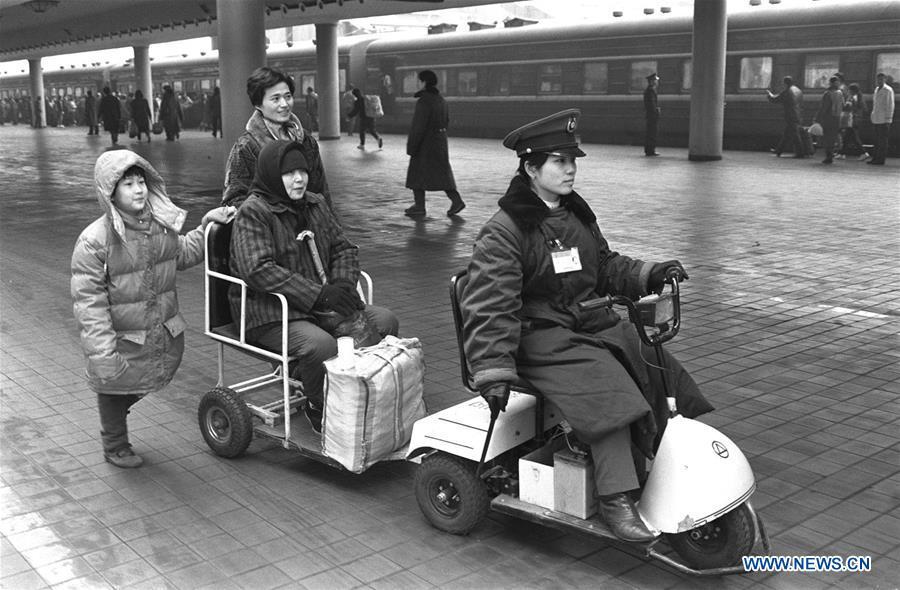
Staff member Xu Xin sends senior passenger Zhou Fengying to her train at the Beijing Railway Station in Beijing, capital of China, Jan. 30, 1994. Returning to hometowns remains the most important part of the Chinese Spring Festival. Whether self-driving, or taking the trains or flights, homecomings and family gatherings are a priority for many Chinese. The annual travel rush around the festival, known as "chunyun," often puts the country's transportation system to the test. China's transport authorities are busy getting ready for the Spring Festival travel rush starting Jan. 21 this year, with 3 billion trips expected to be made. (Xinhua/Tang Zhaoming)
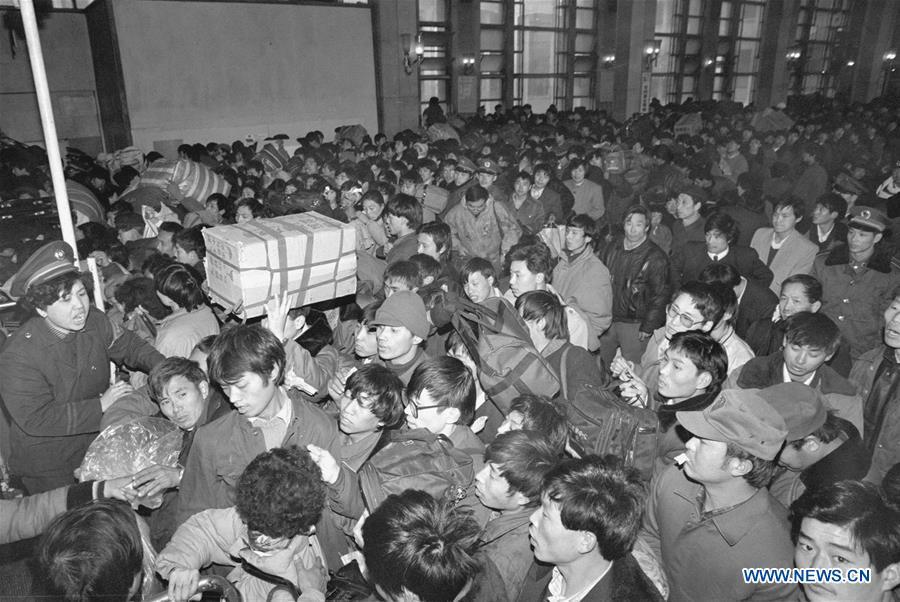
Passengers queue to enter the Beijing Railway Station during the Spring Festival travel rush in Beijing, capital of China, Jan. 12, 1993. Returning to hometowns remains the most important part of the Chinese Spring Festival. Whether self-driving, or taking the trains or flights, homecomings and family gatherings are a priority for many Chinese. The annual travel rush around the festival, known as "chunyun," often puts the country's transportation system to the test. China's transport authorities are busy getting ready for the Spring Festival travel rush starting Jan. 21 this year, with 3 billion trips expected to be made. (Xinhua/Tang Zhaoming)

Staff members guide passengers at the Guangzhou Railway Station, south China's Guangdong Province, on Jan. 24, 2006. Returning to hometowns remains the most important part of the Chinese Spring Festival. Whether self-driving, or taking the trains or flights, homecomings and family gatherings are a priority for many Chinese. The annual travel rush around the festival, known as "chunyun," often puts the country's transportation system to the test. China's transport authorities are busy getting ready for the Spring Festival travel rush starting Jan. 21 this year, with 3 billion trips expected to be made. (Xinhua/Ding Yong)
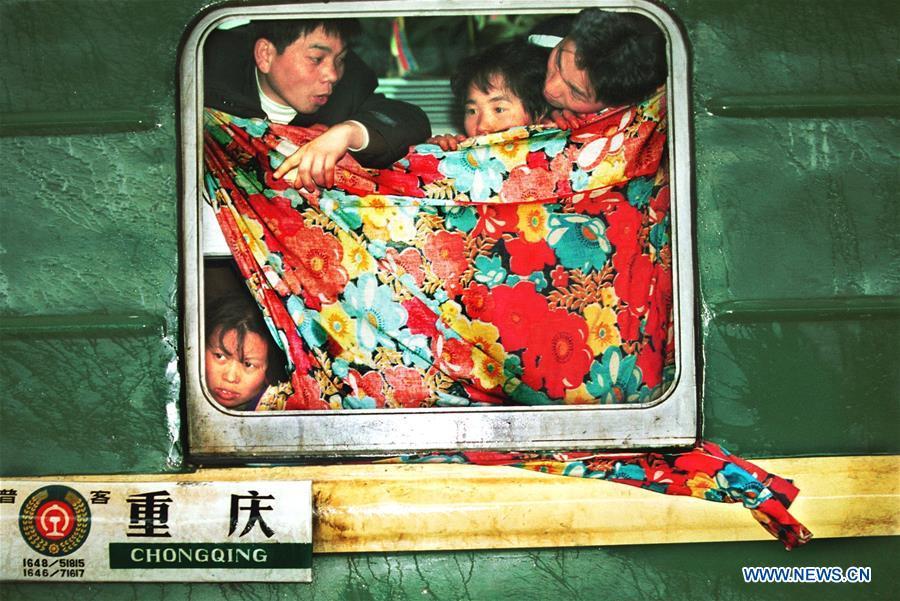
Passengers look outside through a windshielding bedsheet on a train at the Hankou Railway Station, central China's Hubei Province, Jan. 21, 2001. Returning to hometowns remains the most important part of the Chinese Spring Festival. Whether self-driving, or taking the trains or flights, homecomings and family gatherings are a priority for many Chinese. The annual travel rush around the festival, known as "chunyun," often puts the country's transportation system to the test. China's transport authorities are busy getting ready for the Spring Festival travel rush starting Jan. 21 this year, with 3 billion trips expected to be made. (Xinhua)
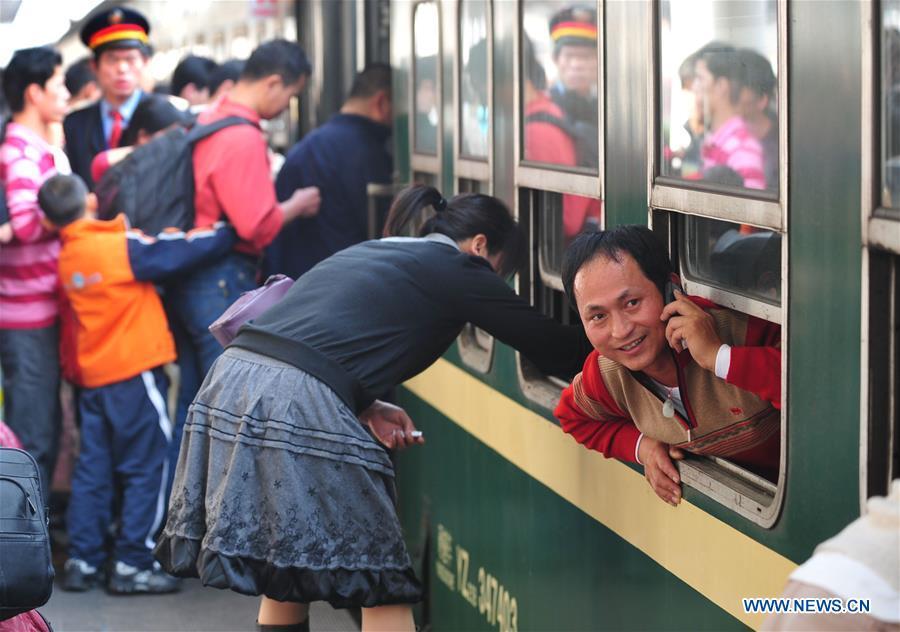
A passenger calls home as soon as he gets on the train at Guangzhou Railway Station in Guangzhou, south China's Guangdong Province, Jan. 22, 2009. Returning to hometowns remains the most important part of the Chinese Spring Festival. Whether self-driving, or taking the trains or flights, homecomings and family gatherings are a priority for many Chinese. The annual travel rush around the festival, known as "chunyun," often puts the country's transportation system to the test. China's transport authorities are busy getting ready for the Spring Festival travel rush starting Jan. 21 this year, with 3 billion trips expected to be made. (Xinhua/Lu Hanxin)
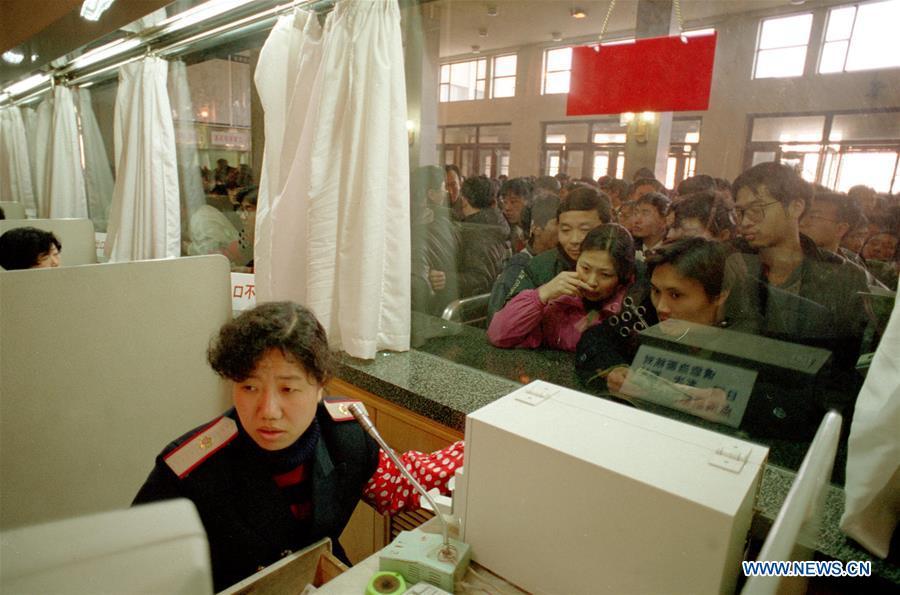
Ticket seller Bai Ziping works at the Beijing Railway Station in Beijing, capital of China, Jan. 18, 1997. Returning to hometowns remains the most important part of the Chinese Spring Festival. Whether self-driving, or taking the trains or flights, homecomings and family gatherings are a priority for many Chinese. The annual travel rush around the festival, known as "chunyun," often puts the country's transportation system to the test. China's transport authorities are busy getting ready for the Spring Festival travel rush starting Jan. 21 this year, with 3 billion trips expected to be made. (Xinhua/Chen Jianli)
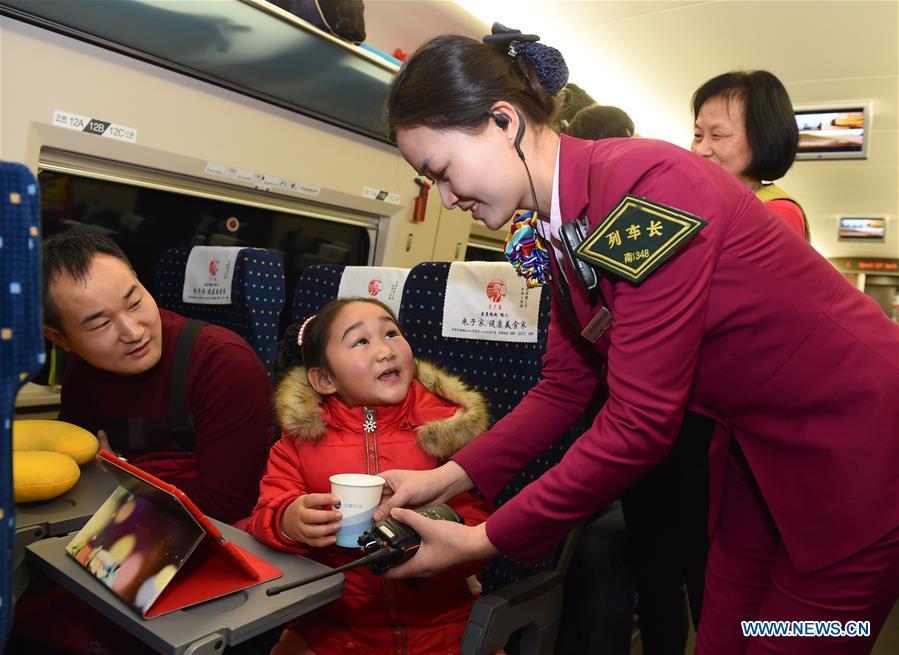
Train conductor Liao Hui (R) with Fuzhou sector of Nanchang's Railway Bureau brings hot water to passengers during the Spring Festival travel rush on Feb. 6, 2016. Returning to hometowns remains the most important part of the Chinese Spring Festival. Whether self-driving, or taking the trains or flights, homecomings and family gatherings are a priority for many Chinese. The annual travel rush around the festival, known as "chunyun," often puts the country's transportation system to the test. China's transport authorities are busy getting ready for the Spring Festival travel rush starting Jan. 21 this year, with 3 billion trips expected to be made. (Xinhua/Jiang Kehong)
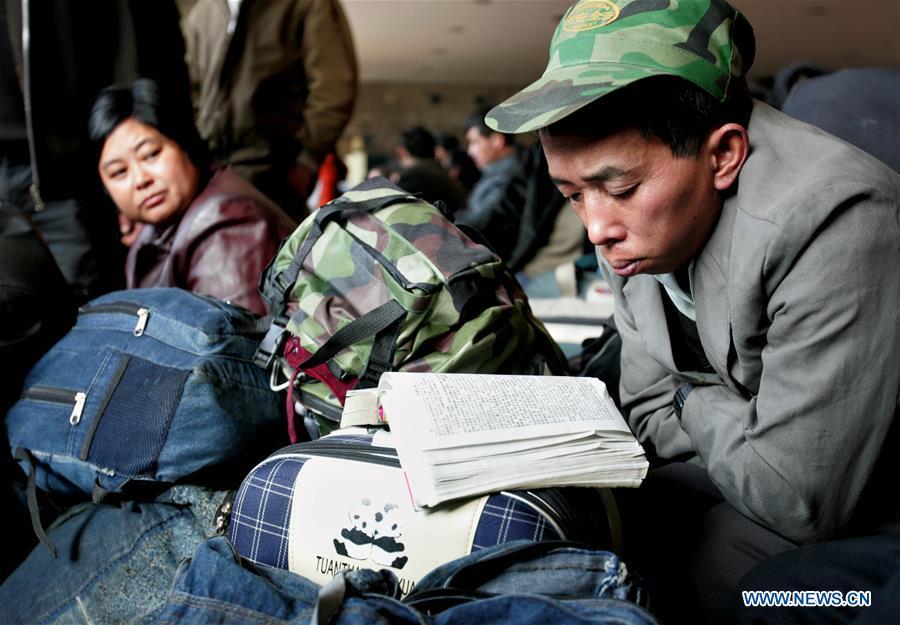
Passengers wait at the departure lounge of the Taiyuan Railway Station in Taiyuan, north China's Shanxi Province, Feb. 2, 2007. Returning to hometowns remains the most important part of the Chinese Spring Festival. Whether self-driving, or taking the trains or flights, homecomings and family gatherings are a priority for many Chinese. The annual travel rush around the festival, known as "chunyun," often puts the country's transportation system to the test. China's transport authorities are busy getting ready for the Spring Festival travel rush starting Jan. 21 this year, with 3 billion trips expected to be made. (Xinhua/Cai Yang)
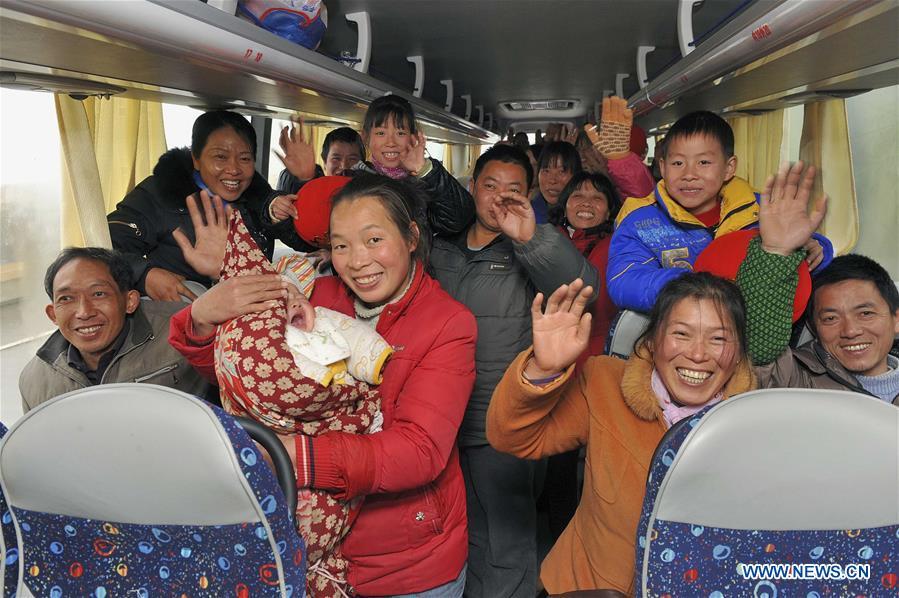
Migrant workers of a private enterprise get on a bus heading for their hometowns in Shaoxing, east China's Zhejiang Province, Jan. 28, 2011. Returning to hometowns remains the most important part of the Chinese Spring Festival. Whether self-driving, or taking the trains or flights, homecomings and family gatherings are a priority for many Chinese. The annual travel rush around the festival, known as "chunyun," often puts the country's transportation system to the test. China's transport authorities are busy getting ready for the Spring Festival travel rush starting Jan. 21 this year, with 3 billion trips expected to be made. (Xinhua/Yuan Yun)

Staff members of the Shijiazhuang Railway Station pour hot water into passengers' cups during the Spring Festival travel rush in Shijiazhuang, north China's Hebei Province, in the year of 1984. Returning to hometowns remains the most important part of the Chinese Spring Festival. Whether self-driving, or taking the trains or flights, homecomings and family gatherings are a priority for many Chinese. The annual travel rush around the festival, known as "chunyun," often puts the country's transportation system to the test. China's transport authorities are busy getting ready for the Spring Festival travel rush starting Jan. 21 this year, with 3 billion trips expected to be made. (Xinhua/Zhao Liansheng)
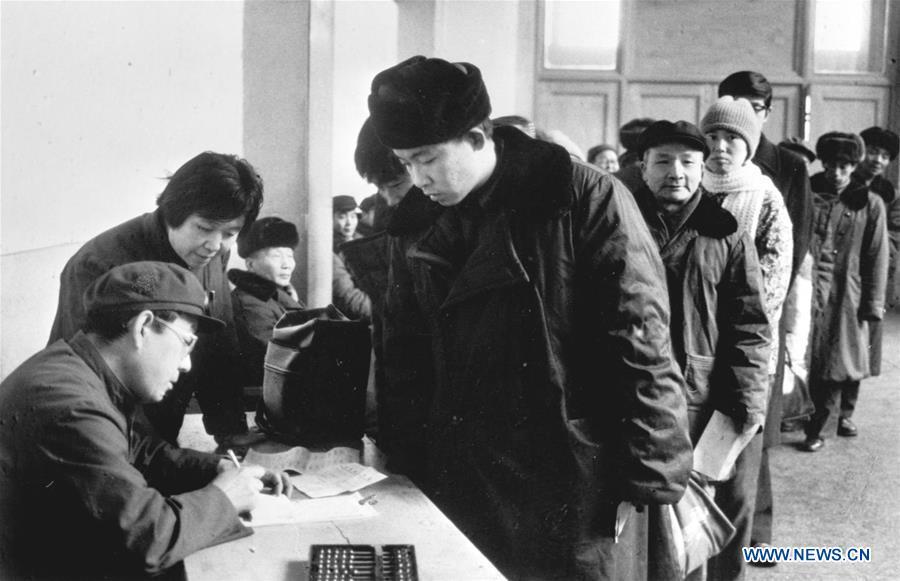
File Photo taken on Jan. 6, 1984 shows the newly-set group ticket desk at the Beijing Railway Station in Beijing, capital of China. Returning to hometowns remains the most important part of the Chinese Spring Festival. Whether self-driving, or taking the trains or flights, homecomings and family gatherings are a priority for many Chinese. The annual travel rush around the festival, known as "chunyun," often puts the country's transportation system to the test. China's transport authorities are busy getting ready for the Spring Festival travel rush starting Jan. 21 this year, with 3 billion trips expected to be made. (Xinhua/Huang Zhong)
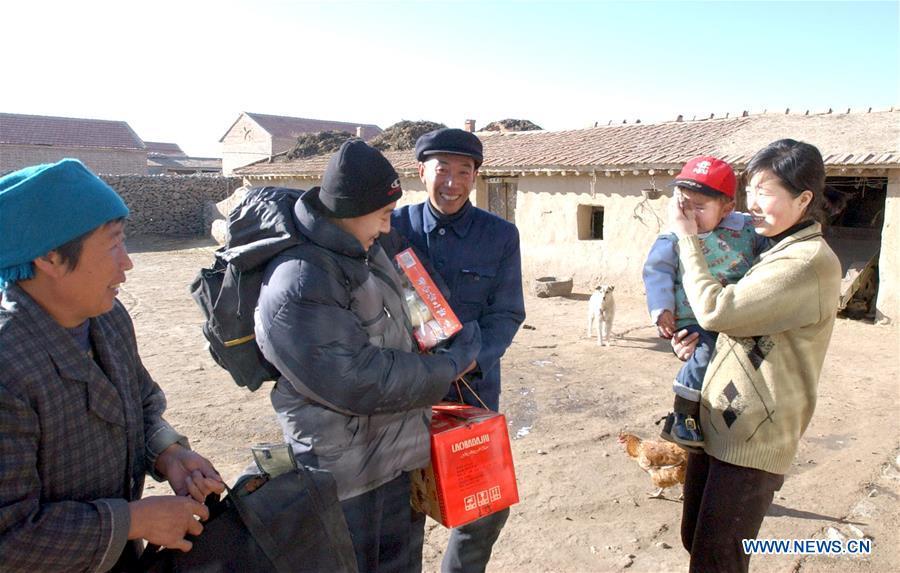
Migrant worker Chu Mingdong (2nd, L) is received by his family as he returns home for the Spring Festival family reunion in Mijiagou Village, Zhangbei County of north China's Hebei Province, Feb. 10, 2002. Returning to hometowns remains the most important part of the Chinese Spring Festival. Whether self-driving, or taking the trains or flights, homecomings and family gatherings are a priority for many Chinese. The annual travel rush around the festival, known as "chunyun," often puts the country's transportation system to the test. China's transport authorities are busy getting ready for the Spring Festival travel rush starting Jan. 21 this year, with 3 billion trips expected to be made. (Xinhua/Zhou Wenguang)
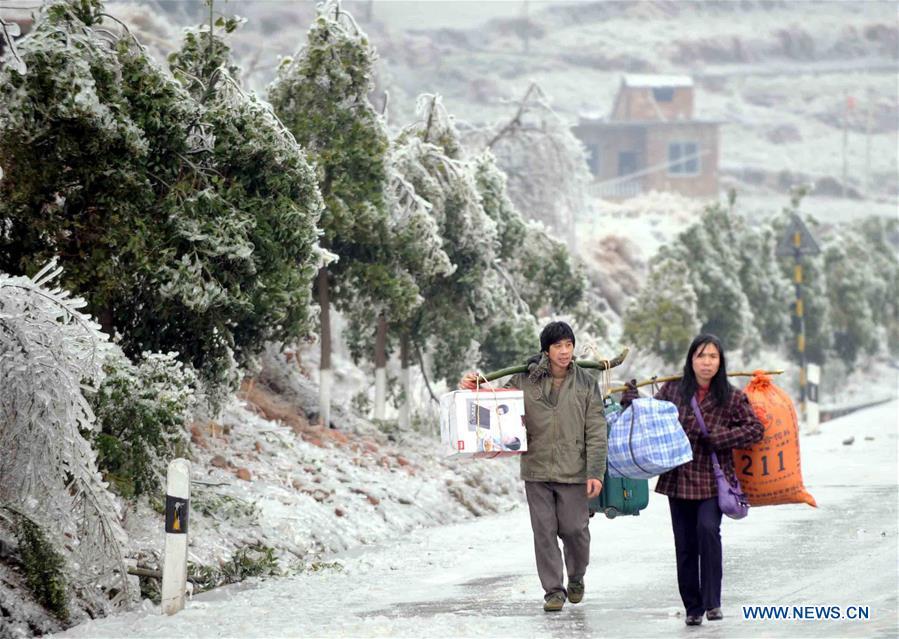
Pedestrians walk on a road closed due to heavy snow on their way home for the Spring Festival family reunion in Guanyang County of south China's Guangxi Zhuang Autonomous Region, Jan. 28, 2008. Returning to hometowns remains the most important part of the Chinese Spring Festival. Whether self-driving, or taking the trains or flights, homecomings and family gatherings are a priority for many Chinese. The annual travel rush around the festival, known as "chunyun," often puts the country's transportation system to the test. China's transport authorities are busy getting ready for the Spring Festival travel rush starting Jan. 21 this year, with 3 billion trips expected to be made. (Xinhua/Chen Ruihua)

Migrant worker Chen Yifeng (8th, R) and his wife Xu lining (5th, R) pose for photos with their family after a 14-hour journey by motorcycle from Foshan, south China's Guangdong Province, to Pingding Village, Teng County of south China's Guangxi Zhuang Autonomous Region, Jan. 19, 2017. Returning to hometowns remains the most important part of the Chinese Spring Festival. Whether self-driving, or taking the trains or flights, homecomings and family gatherings are a priority for many Chinese. The annual travel rush around the festival, known as "chunyun," often puts the country's transportation system to the test. China's transport authorities are busy getting ready for the Spring Festival travel rush starting Jan. 21 this year, with 3 billion trips expected to be made. (Xinhua/Cai Yang)










